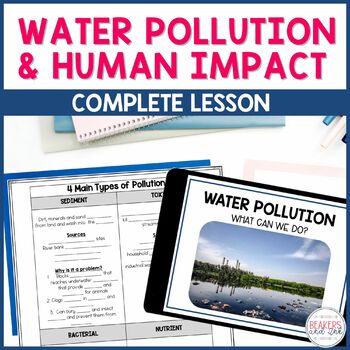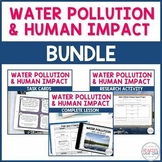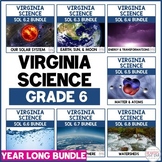Water Pollution and Human Impact Lesson on the Environment
- Zip
- Google Apps™

What educators are saying
Also included in
- Take away the stress of planning your water pollution and human impact unit! This no-prep, differentiated resource includes everything you need to help students understand water pollution and human impact on the environment. Students will learn about how our environment is affected by point and nPrice $11.25Original Price $14.00Save $2.75
- Are you a sixth grade science teacher in Virginia looking for no-prep, engaging resources to teach about watersheds in Virginia? Learn about watershed systems, estuaries (including the Chesapeake Bay), and the biotic, abiotic factors, and human activities that influence the health of our watershed.Price $25.50Original Price $31.00Save $5.50
- "I truly do not know what I would have done without this resource. Worth every penny." Teaching sixth grade science standards in Virginia is a snap! For a little over $1 a day, your lessons are ready to go and aligned to the 2018 SOLS (Standards of Learning). This bundle includes engaging science aPrice $257.40Original Price $286.00Save $28.60
Description
Teaching students about point and non-point pollution sources and the types of water pollution can be tricky! This engaging, no-prep water pollution and human impact on the enfironment resource will help your students understand the causes and effects of toxic, nutrient, sediment, and bacterial water pollution. This differentiated resource will save you hours of planning!
Included in this water pollution resource:
- Teacher notes
- Video lecture (great for distance learning!)
- Presentation
- Graphic organizers with suggested answers
- Differentiated Notes (3 levels - blank, completed and fill in)
- Versions for PowerPoint AND Google Slides (students can type directly onto the notes and graphic organizers - easily assign in Google Classroom)
- Word Wall cards in black and white (for easy printing) and color
- Directions for assigning to Google Classroom and for splitting a PDF to assign
Why purchase this product?
- No prep, just print and go, which saves your time
- Engaging for students
- Aligned to standards
- Great for distance learning, substitutes, and absent students
- Differentiated notes
Related Products You May Be Interested In:
⭐ Water Pollution and Human Impact Research Project - Distance Learning Friendly
⭐ Water Pollution and Human Impact Task Cards - Distance Learning Friendly
⭐Customer Tip - Submit feedback to earn TPT credit!⭐
Go to your "My Purchases" page. For each purchase, there is a "Provide Feedback" link. Click it to be taken to a page where you can give a quick rating and leave a short comment for the product.
Every time you give feedback, TPT gives you credit that you may use to lower the cost of your future purchases!
Let's Get Connected!!
❥Email - carrie@beakersandink.com
❥Join our Facebook page!
❥Follow me on Pinterest and Instagram
❥Check out our BLOG and get access to the Free Resource Library!








